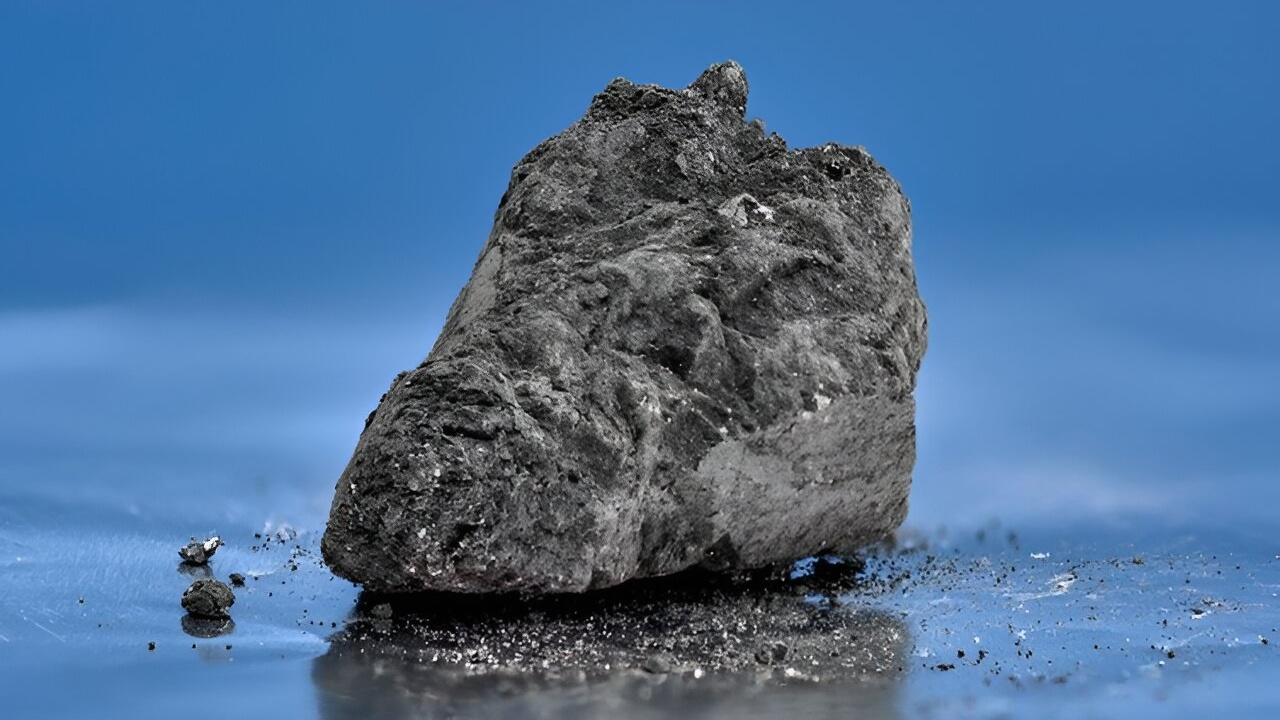[ad_1]

The Winchcombe meteorite, which fell to the ground in Gloucestershire in the U.K. after blazing a trail through the night sky on Feb. 28, 2021, came from an asteroid that had been heavily altered by water as well as smashed apart and reformed multiple times.
That’s the conclusion of a detailed analysis of the meteorite, fragments of which were found scattered in fields near the village of Winchcombe, and even on one family’s driveway. It was the first meteorite fall in the U.K. to be retrieved since 1991. Thanks to the U.K. Fireball Alliance’s network of video cameras watching the sky, as well as eyewitness reports, scientists were able to triangulate the approximate area in which the meteorite had fallen.
The next day, search teams were on-site. They were able to quickly retrieve fragments of the meteorite, in some cases within hours of landfall and before Earth’s atmosphere had been able to chemically alter the space rock in any serious way (although some of the fragments did exhibit terrestrial contamination, including from table salt). A total of 602 grams (21.2 ounces) worth of material was collected in total.
Related: ‘Interstellar meteor’ vibrations actually caused by a truck, study suggests
Despite its fire-forward journey, the Winchcombe meteorite fragments are as pristine as one could hope for. Contained within the meteorite’s composition is its secret history that scientists can tease out with sophisticated transmission electron microscopy and techniques such as electron backscatter diffraction, time of flight secondary ion mass spectrometry and atom probe tomography.
These are all methods normally brought to bear on precious material ferried to Earth by asteroid sample-return missions; the fact that scientists could employ these sensitive tools to Winchcombe piece is all thanks to how well-kept the samples are.
“This level of analysis of the Winchcombe meteorite is virtually unprecedented for materials that weren’t directly returned to Earth from space missions, like moon rocks from the Apollo program or samples from the Ryugu asteroid collected by the Hayabusa 2 probe,” said Leon Hicks of the University of Leicester in a statement.
The investigation showed that the fragments were made of a breccia, which is where individual chunks of rock are cemented together (not literally with cement used to build houses, but by a mixture known as a cataclastic mix). The Winchcombe meteorite is classified as a CM carbonaceous chondrite, which is a carbon-rich and stony rock. The analysis, which probed the fragments at the nanometer scale, found that the Winchcombe breccia was formed from eight different types of CM chondrite, which are the most common variation of carbonaceous chondrite.
“We were fascinated to uncover just how fragmented the breccia was within the Winchcombe sample we analyzed,” said Luke Daly of the University of Glasgow, who led the research. “If you imagine the Winchcombe meteorite as a jigsaw, what we saw in the analysis was as if each of the jigsaw pieces themselves had also been cut into smaller pieces and then jumbled in a bag filled with fragments of seven other jigsaws.”
This suggests that the Winchcombe meteorite’s parent asteroid had been smashed apart and reformed multiple times, presumably following collisions with other asteroids early in the solar system‘s history.
Moreover, the meteorite fragments also indicate clear evidence of having been chemically altered by liquid water before getting smashed apart. In some cases, grains altered by water were found right next to unaltered grains, so quite jumbled had the breccia become. There were also unexpectedly high abundances of carbonate materials such as aragonite, calcite and dolomite. These are carbon-based minerals, and the implication is that Winchcombe’s parent asteroid once possessed a large amount of carbon-dioxide ice. Some event, perhaps a collision, melted this ice and allowed it to chemically alter the rock to form the carbonates. This could also explain puzzling carbonate-rich veins found on the surface of the asteroid Bennu by NASA’s OSIRIS-REx mission.
“It gives us a clearer idea of how it must have been battered by impacts and reformed again and again over the course of its lifetime since it swirled together out of the solar nebula, billions of years ago,” concluded Daly.
These findings are not the first discoveries to be made about the Winchcombe meteorite, however. Earlier this year it was revealed by several groups of scientists that advanced electron microscopy had found amino acids and nucleobases within the meteorite. Although these molecules are not directly involved in life as we know it, they are precursors to more complex amino acids that are known as biologically useful.
The presence of water on the Winchcombe meteorite’s parent asteroid could also aid in the understanding of where Earth’s water came from. The leading theory is that it was brought to Earth by impacts, but were they impacts of comets or asteroids? Carbonaceous chondrites seem the most likely source, potentially making the water-altered Winchcombe samples a key piece of evidence if future research can reveal more about whether the deuterium-to-hydrogen ratio in the asteroid’s water matches that of Earth’s water.
The research was published on April 16 in the journal Meteoritics and Planetary Science.
[ad_2]